Nine charts that really bring home just how fast AI is growing
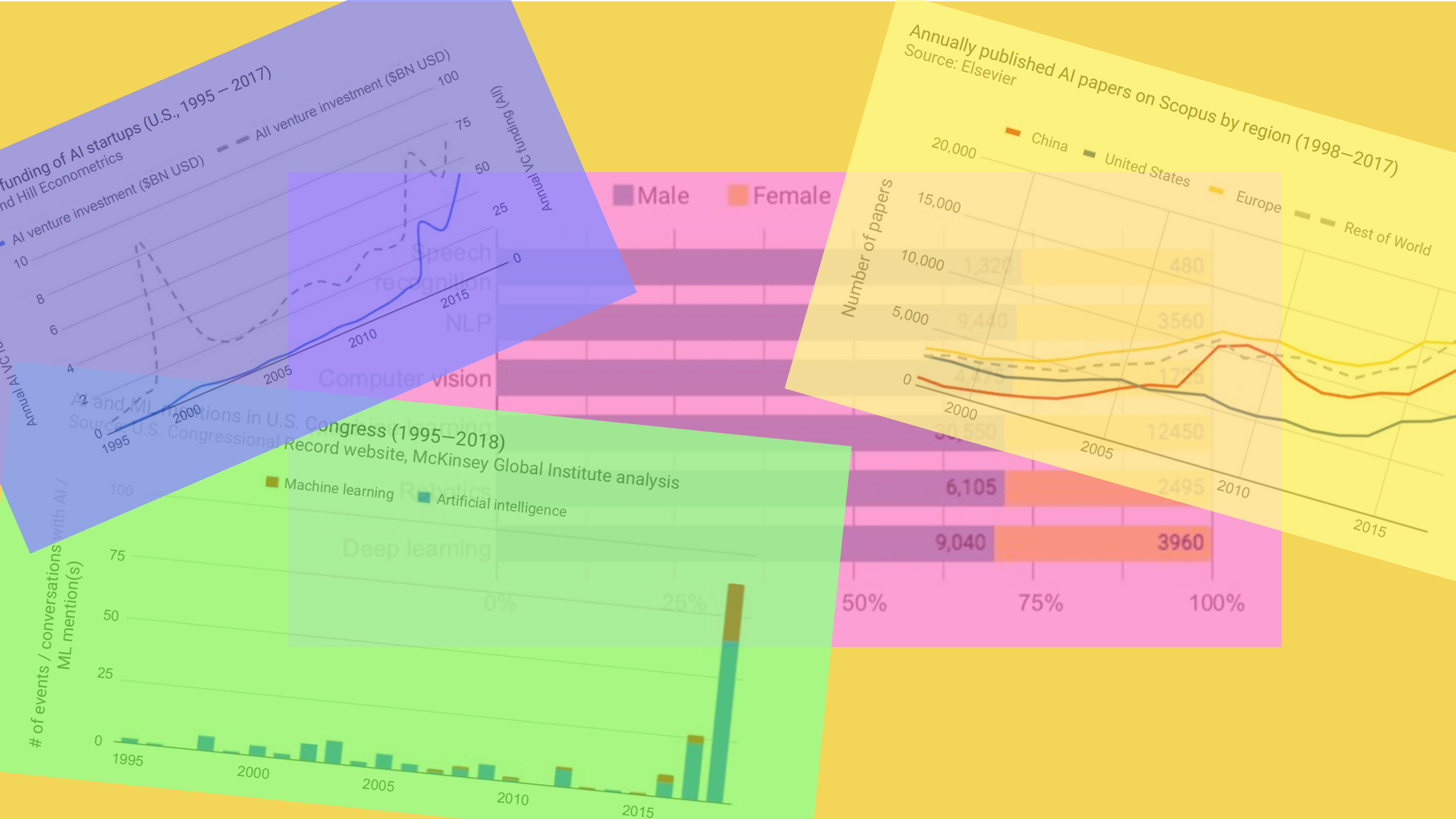
With so much hype surrounding artificial intelligence today, it can be difficult to know where things actually stand. Fortunately, a report (.pdf) issued by a group of AI policy researchers today collates a range of data that helps capture the state of the AI boom.
The authors, from MIT, Stanford, and Harvard as well as nonprofits including OpenAI, look at investments, hiring, papers and patents, and even mentions of AI at government meetings. Here are some take-aways.
1. AI is being commercialized at a dizzying pace.
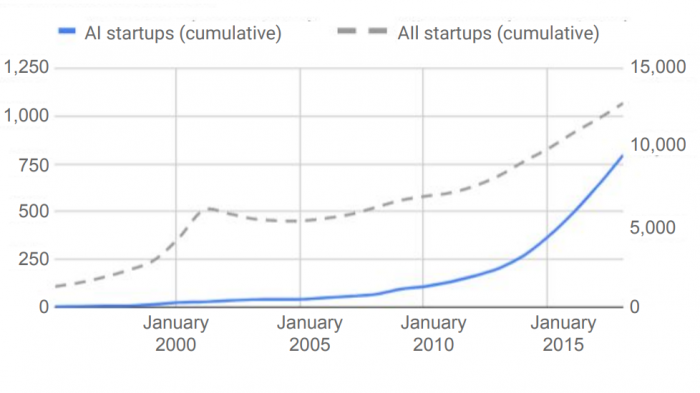
The amount of money being poured into AI startups is remarkable. The number of AI startups (top) is shown on the left, compared with total startups on the right. AI investment (below) is shown on the left, compared with total investments on the right. This speaks to huge opportunities to use machine learning in different industries, but also to a market that is hyped and overheated.
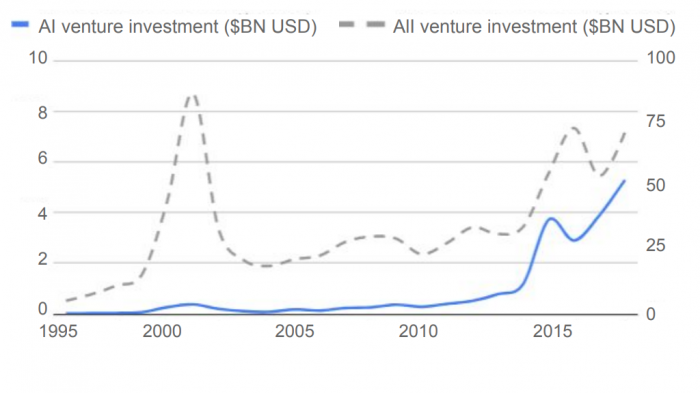
2. The focal points are China and the US, but also Europe.
Much has been made of China’s rising AI prowess (see “China’s AI awakening”) and its growing rivalry with the US. As the data shows, Europe is also a huge hub of AI activity. But it seems that three main centers of power are emerging.

3. There are still far more men in the field than women.
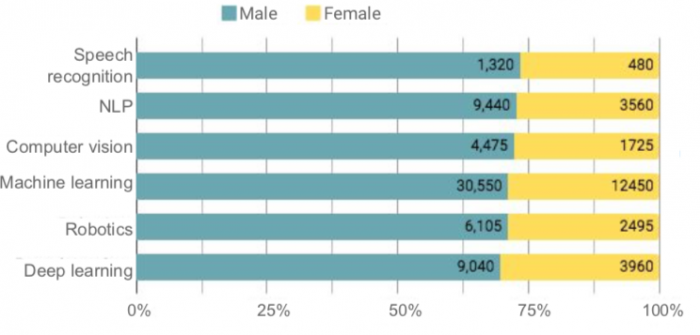
Many researchers have pointed to the inadequate number of women and racial minorities in AI research. The new report offers some data to back that up, showing a shortage of women among applicants for AI-related jobs (top) and as a percentage of people in AI teaching roles (bottom).
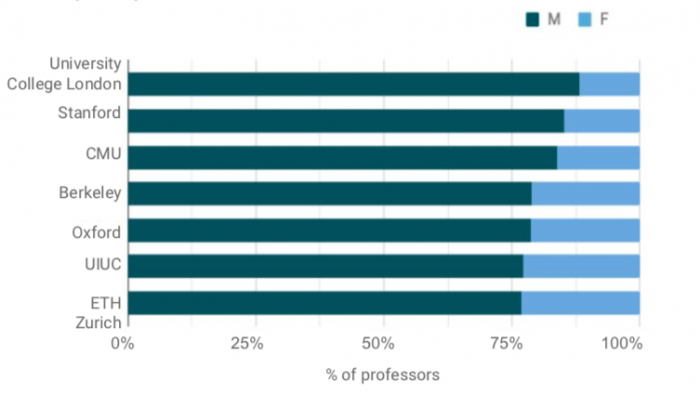
4. The state of the art is improving fast.
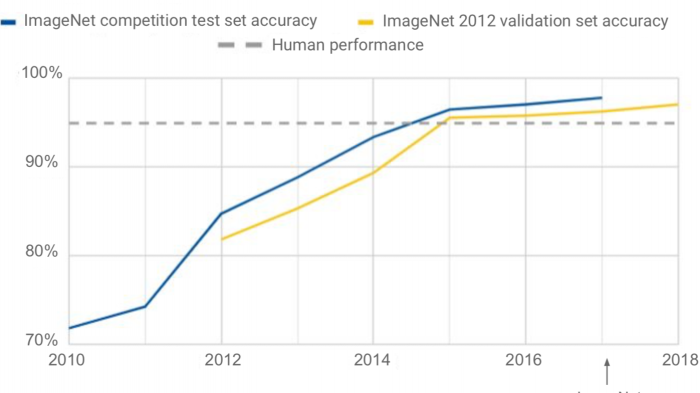
The report includes several measures of technical progress, including the accuracy of object recognition in images, measured against average human performance (top), and the accuracy of machine translations of news articles, measured using a score assigned by human judges (bottom). These don’t mean that the field is getting closer to developing a human-level AI, but they show how key techniques have been honed in recent years.
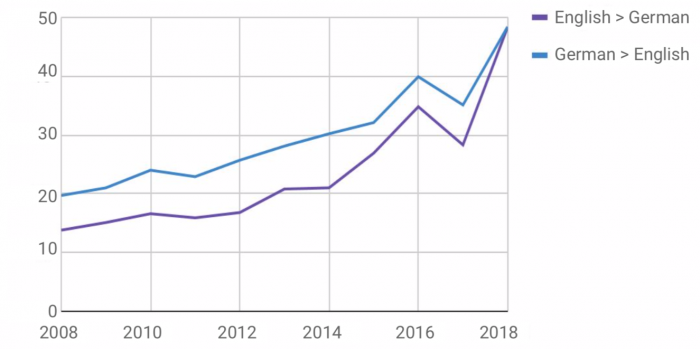
5. Artificial intelligence is a political issue.
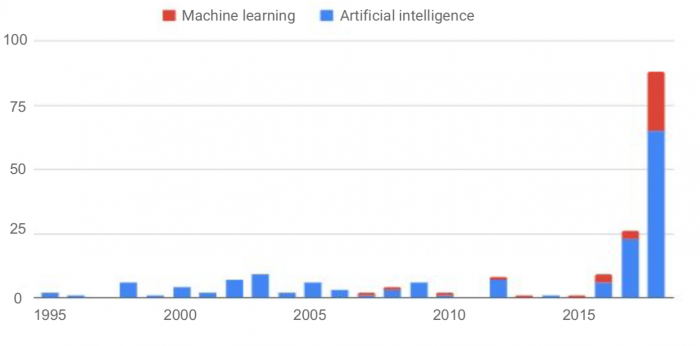
Mentions of artificial intelligence and machine learning in the US Congress (above) and the UK Parliament (below) have exploded in the past few years. This reflects a growing awareness of the technology’s economic and strategic importance (see “Canada and France propose an international panel on AI”).
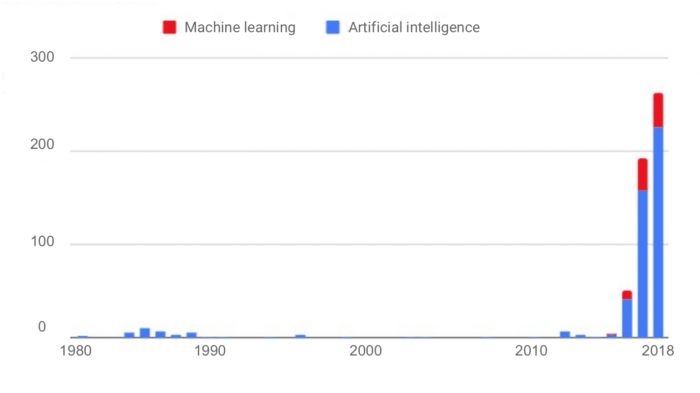
For more info, and to find the data itself, check out the AI Index site.
Deep Dive
Artificial intelligence
Large language models can do jaw-dropping things. But nobody knows exactly why.
And that's a problem. Figuring it out is one of the biggest scientific puzzles of our time and a crucial step towards controlling more powerful future models.
Google DeepMind’s new generative model makes Super Mario–like games from scratch
Genie learns how to control games by watching hours and hours of video. It could help train next-gen robots too.
What’s next for generative video
OpenAI's Sora has raised the bar for AI moviemaking. Here are four things to bear in mind as we wrap our heads around what's coming.
Stay connected
Get the latest updates from
MIT Technology Review
Discover special offers, top stories, upcoming events, and more.